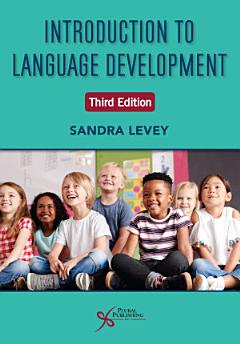Introduction to Language Development, Third Edition offers a highly accessible overview to the complexities of language development. The textbook is designed for use in language acquisition courses in undergraduate and graduate speech-language pathology programs to facilitate both teaching and learning. Complex terminology and theories are explained through definitions and examples to ensure that students are able to easily grasp the content. Within the third edition of this text, students are presented with language factors—syntax, semantics, phonology, morphology, and pragmatics—as well as the cognitive abilities that underlie language development. Multilingual and multicultural differences are explored throughout.
Key Features:
* Case studies allow instructors to involve students more fully in classroom discussion, along with developing their critical thinking and problem-solving skills
* Chapter learning objectives allow students to understand the scope and goals of the chapter
* Study questions allow instructors to engage students in discussions of the material and ensure students grasp and retain the information
* Tables and figures provide examples and evidence that elaborate and clarify the information presented
* A comprehensive glossary helps students locate the definitions of key terms
New to the Third Edition:
* Expanded focus on diversity and the role that culture plays in language learning
* Updated to reflect the increased impact of technology in literacy and learning
* Improved readability through the introduction of terminology, concepts, and practical strategies that will be encountered in chapters that follow
* The inclusion of new terminology that reflects patient-centric language and updated terms that respect diversity of individuals served by speech-language pathologists and audiologists
Disclaimer: Please note that ancillary content (such as documents, audio, and video, etc.) may not be included as published in the original print version of this book.

